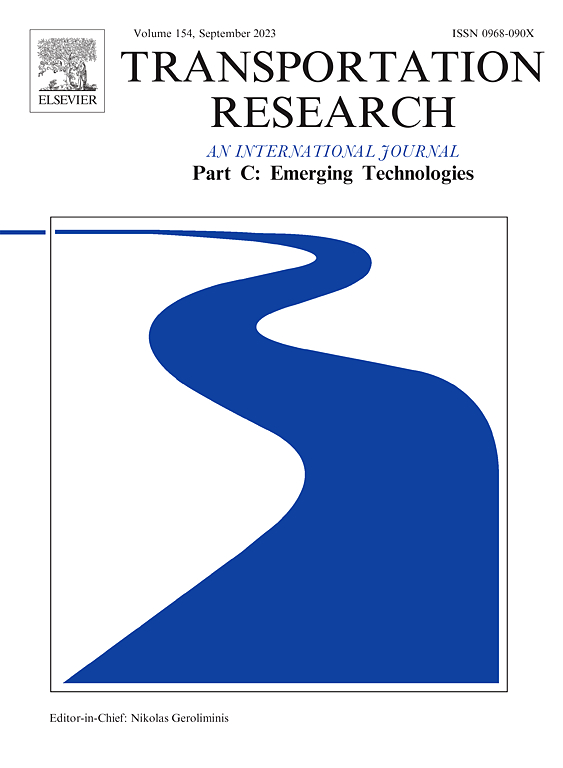The multi-visit vehicle routing problem with multiple heterogeneous drones
IF 7.6
1区 工程技术
Q1 TRANSPORTATION SCIENCE & TECHNOLOGY
Transportation Research Part C-Emerging Technologies
Pub Date : 2025-02-09
DOI:10.1016/j.trc.2025.105026
引用次数: 0
Abstract
The integration of drones into last-mile delivery logistics offers a promising avenue for enhancing delivery efficiency. This advancement has garnered considerable interest in the truck−drone cooperative delivery problem. In response, this study delves into the multi-visit vehicle routing problem with multiple heterogeneous drones (MV-VRP-MHD), focused on addressing its feasibility and scalability in real-world, large-scale settings. By considering essential factors such as drones’ ability for multiple deliveries, varied energy consumption patterns, and the employment of heterogeneous drone fleets, our model aims to minimize the overall completion time. To address the challenge of tackling large-scale instances, we introduce a hybrid algorithm that combines variable neighborhood search and simulated annealing (VNS-SA). This algorithm applies a two-phased approach to construct an initial solution and further refines it through the implementation of four unique neighborhood operators. Finally, to confirm the effectiveness of MV-VRP-MHD and VNS-SA, a comprehensive series of computational experiments was carried out. The experiments demonstrated that MV-VRP-MHD significantly enhances the efficiency of last-mile delivery. The analysis results indicate that the heterogeneous drone fleet effectively handles large-area deliveries. It also found that while improvements in drone speed, payload capacity, and battery life were beneficial, incremental enhancements in these areas yielded limited effects when applied individually. Operator experiments revealed that the drone route generation operator was the most effective among the four neighborhood operators. Finally, we discuss the impact of uncertainties in the delivery process on the model results.
求助全文
约1分钟内获得全文
求助全文
来源期刊
CiteScore
15.80
自引率
12.00%
发文量
332
审稿时长
64 days
期刊介绍:
Transportation Research: Part C (TR_C) is dedicated to showcasing high-quality, scholarly research that delves into the development, applications, and implications of transportation systems and emerging technologies. Our focus lies not solely on individual technologies, but rather on their broader implications for the planning, design, operation, control, maintenance, and rehabilitation of transportation systems, services, and components. In essence, the intellectual core of the journal revolves around the transportation aspect rather than the technology itself. We actively encourage the integration of quantitative methods from diverse fields such as operations research, control systems, complex networks, computer science, and artificial intelligence. Join us in exploring the intersection of transportation systems and emerging technologies to drive innovation and progress in the field.

 求助内容:
求助内容: 应助结果提醒方式:
应助结果提醒方式:


